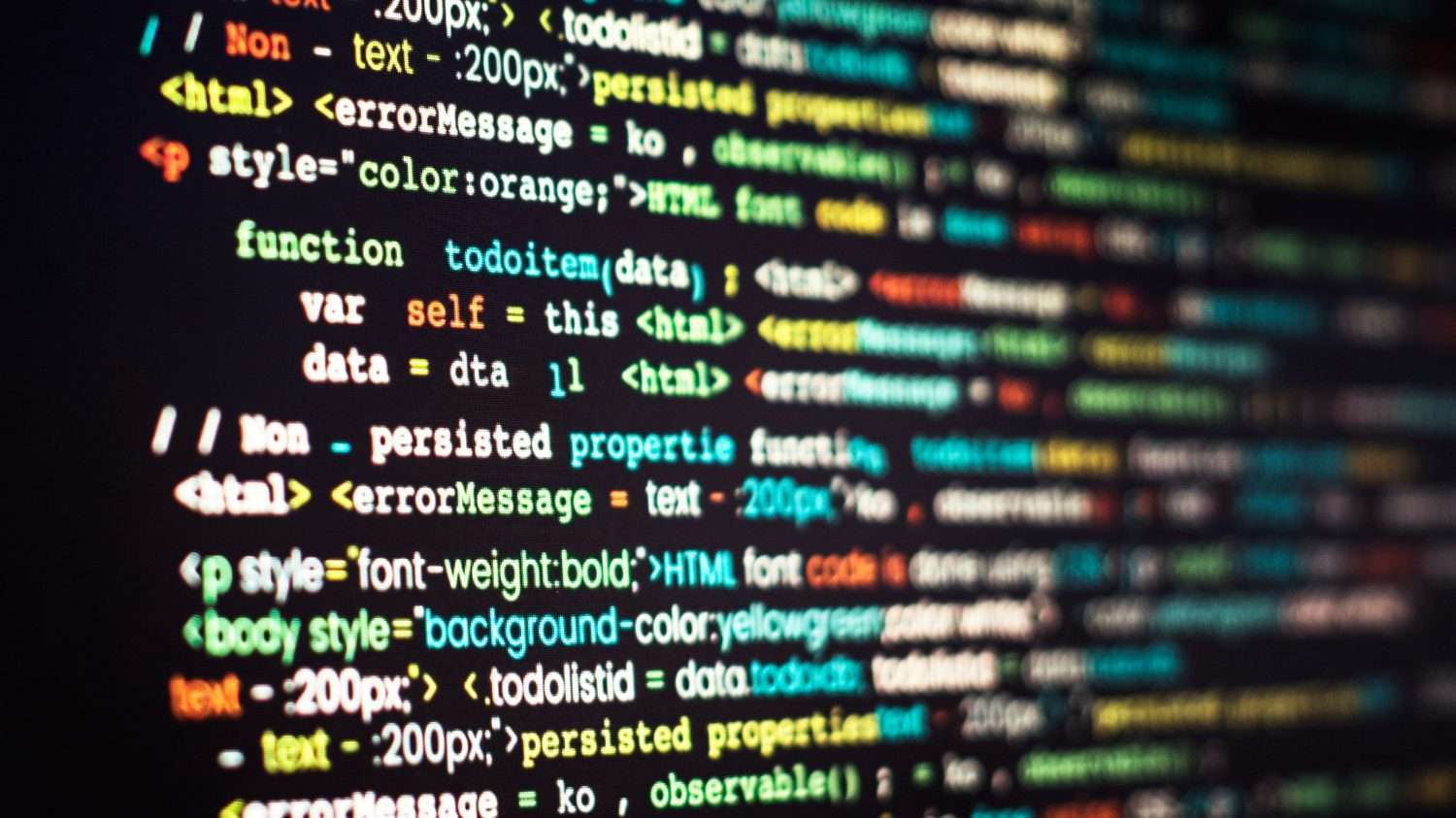In these modern times, automation isn’t a luxury; it’s a necessity. Business entities globally, particularly in influential tech hubs, grapple with the task of innovating and adapting. This invariably includes coding machine learning algorithms in popular languages like Python and R. But don’t worry, the mystery that often surrounds coding isn’t invincible. This article aims to equip you with some fundamental knowledge to get you started on this stimulating path.
By grasping the basics of R and Python and understanding their applications in machine learning algorithms, you’ll be well on your way to participating in and contributing to your team’s AI-driven endeavors more substantively. This is the knowledge that, shortly, will have you feeling much more at home in automation and AI spaces. 🚀💻
Summary
- Understanding Machine Learning & Its Algorithms
- Why Python and R for Machine Learning
- Exploring Python’s strength in Machine Learning
- A quick dive into R’s relevance in Machine Learning
- Favorite Machine Learning Algorithms and their Python and R Code
Understanding Machine Learning & Its Algorithms
Machine learning (ML) is fundamentally about extracting knowledge from data. It’s a research field at the intersection of statistics, artificial intelligence, and computer science and is also known as predictive analytics or statistical learning. Now let’s briefly glance at the various machine learning algorithms that data scientists use to solve problems.
The Four Types of Machine Learning Algorithms
ML algorithms are majorly divided into four types: Supervised Learning, Semi-supervised Learning, Unsupervised Learning, and Reinforcement Learning.
- Supervised learning algorithms use labeled data to predict outcomes. It’s like a teacher supervising the learning process. These techniques predict future events by learning the relationship between the input patterns (samples) and the output patterns. Think of it like a cricketer learning to predict the direction and speed of the ball based on the bowler’s movements.
- Unsupervised learning, in contrast, does not use labeled data. The algorithm must find patterns and relationships in the input data independently. Picture a detective trying to find connections between clues to solve a mystery.
- Semi-supervised learning is a fusion of supervised and unsupervised learning. Here, a few data points are labeled, and the algorithm relies on these along with the unlabeled data to build a predictive model.
- Reinforcement learning is a bit different. It’s about software agents and machines, taking actions in an environment to maximize rewards. For example, a chess program learning the best moves by playing thousands of games against itself.
Functionalities of Machine Learning Algorithms
Machine Learning algorithms make machines recognize patterns and gain learning from data. These include classification, regression, clustering, and dimensionality reduction.
- Classification involves predicting discrete responses or classes. For example, predicting whether an email is spam or not spam based on previous patterns is a classification task.
- Regression involves predicting continuous responses. For example, predicting the price of a house based on features like its square footage, number of bedrooms, and location is a regression task.
- Clustering involves grouping input data into classes based on their resemblance. For example, implementing customer segmentation in a company based on the characteristics and behaviors of customers is a clustering task.
- Dimensionality reduction simplifies complex data by reducing the number of variables while retaining essential information. It aids in visualizing high-dimensional data, eliminating redundancy, and addressing the curse of dimensionality.
Building Machine Learning Algorithms in Python and R
No programming language offers a one-size-fits-all solution for Machine Learning. That’s why data scientists use several languages suited to specific tasks, Python and R being paramount among them. A deep understanding of these languages, together with knowledge of ML algorithms, forms the cornerstone for the development of more advanced AI technology.
Let’s explore how we use Python and R in the sphere of machine learning algorithms. 🚀
Why Python and R for Machine Learning
Python and R have emerged as two of the most popular languages in the world of Machine Learning and data analysis. Thanks to their syntax, versatility, and the availability of ML and stats libraries.
Python is known for its simplicity and readability, which makes it great for beginners. The language handles everything from data ingestion, data cleaning, and data visualization to implementing machine learning and deep learning algorithms.
On the other hand, R was designed by statisticians for statisticians. Its popularity in academia led to an array of statistical and graphical techniques being developed in R.
Exploring Python’s Strength in Machine Learning
Python’s syntax is clear, intuitive, and similar to English, which is a significant advantage for beginners in coding. It also boasts a broad selection of machine learning-specific libraries and frameworks such as NumPy, Scikit-Learn, and TensorFlow. These tools make it easy to both understand the principles of machine learning and apply them.
Let’s take the task of classification for instance. Python’s Scikit-Learn library provides high-level objects for this purpose. Check it out in the snippet below:
from sklearn import tree X = [[0, 0], [1, 1]] Y = [0, 1] clss = tree.DecisionTreeClassifier() clss = clss.fit(X, Y)
In the code above, we trained the model on the dataset, and then made it ready to use on new datasets.

Understanding R’s Relevance in Machine Learning
R is especially advantageous when it comes to exploratory work and figuring out what model is right for your model. It has some excellent packages for conducting statistical analysis.
Additionally, R has robust visuals, graph, and chart support, making it preferred for data visualization.
Here’s how you would approach the same classification task using R’s tree package:
library(tree) Y <- c(0, 1) X <- data.frame(a=c(0, 1), b=c(0, 1)) clss <- tree(a ~ b, data=X) summary(clss)
In this code, we’re doing something similar: training a machine learning algorithm to classify data, based on the given dataset.
Favorite Machine Learning Algorithms and their Python and R Code
Let’s explore some of the popular machine learning algorithms: Linear Regression, Logistic Regression, the Naive Bayes Classifier, and Decision Trees, and see how we can tailor them in Python and R.
Linear Regression
Let’s take a look at the implementation of Linear Regression in Python and R, respectively.
Python:
from sklearn.linear_model import LinearRegression X = pd.DataFrame(np.random.rand(100,1)) y = pd.DataFrame(np.random.rand(100,1)) reg = LinearRegression().fit(X, y)
R:
X <- as.data.frame(runif(100)) y <- runif(100) fit <- lm(y ~ ., data=X) summary(fit)
Logistic Regression
Take a look at the implementation of Logistic Regression in Python and R.
Python:
from sklearn.linear_model import LogisticRegression X = np.random.rand(100,1) y = np.random.randint(2, size=100) clf = LogisticRegression(random_state=0).fit(X, y)
R:
data = data.frame(y = rbinom(100, size = 1, prob = 0.5), x = rnorm(100)) fit = glm(y ~ x, data = data, family = binomial()) summary(fit)
Naive Bayes Classifier
Let’s implement the Naive Bayes Classifier in Python and R.
Python:
from sklearn.naive_bayes import GaussianNB X = np.random.rand(100,1) Y = np.random.rand(100,1) gnb = GaussianNB() gnb.fit(X, Y)
R:
library(e1071) X <- matrix(rnorm(100), ncol=2) Y <- matrix(sample(c(-1, 1), 100, replace = TRUE), ncol=1) model <- naiveBayes(X, Y)
Decision Tree
See how we can execute a Decision Tree in Python and R.
Python:
from sklearn import tree X = [[0, 0], [1, 1]] Y = [0, 1] clf = tree.DecisionTreeClassifier() clf = clf.fit(X, Y)
R:
library(rpart) X <- data.frame(a=c(0, 1), b=c(0, 1)) y <- c(0, 1) fit <- rpart(y ~ ., data = X, method="class") printcp(fit)
Conclusion
Machine learning’s relevance in today’s digital age cannot be overstated. Whether it’s supervised learning, unsupervised learning, semi-supervised learning, or reinforcement learning, these are integral tools used to drive customers’ experience and the decision-making process.
Python and R stand out in the field of machine learning due to their strong cross-platform compatibility, extensive libraries, and community support. While Python offers a clear and intuitive coding style, R stands out for statistical computing and graphics.
Remember, the more you experiment with different algorithms and datasets, the better you understand how they work and when to use them. Happy learning! 📚
- Analyzing Patterns in Failed Products - July 25, 2024
- Hybrid Cryptographic Systems - July 24, 2024
- Inadequate Threat Intelligence Integration - July 23, 2024
